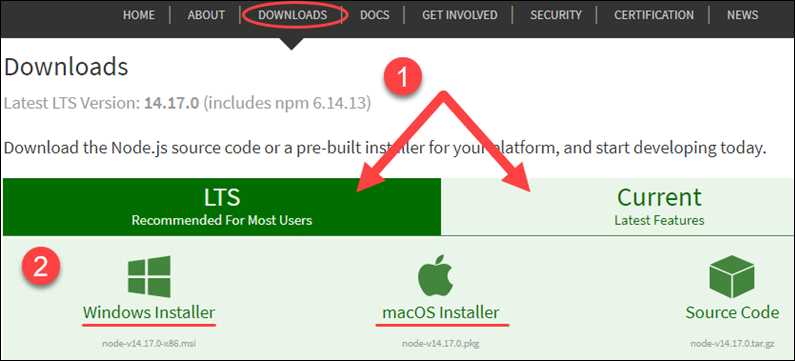

- #UPDATE NODE JS MAC COMMAND LINE HOW TO#
- #UPDATE NODE JS MAC COMMAND LINE UPDATE#
- #UPDATE NODE JS MAC COMMAND LINE UPGRADE#
- #UPDATE NODE JS MAC COMMAND LINE SOFTWARE#
Ubuntu is being considered as a Linux distribution in this case.
#UPDATE NODE JS MAC COMMAND LINE HOW TO#
How to install Node.js on Linux and how to verify the Node.js version? Here, you’ll learn how to determine the version of node installed on your system, as well as how to install it on Linux, Windows, or Mac. You may download and install the versions for Linux, macOS, and Windows.

Node.js has evolved over time to include complex tools and technologies. Node.js is a cross-platform application that may be installed on a variety of operating systems. Read more: 12 Reasons to Choose Node.Js for Product Development How can I determine the version of a node? Groupon, Netflix, IBM, Voxer, and SAP are just a few of the large firms that use Node.js.
#UPDATE NODE JS MAC COMMAND LINE SOFTWARE#
It has taken substantially less time than anticipated for this software to gain the attention of major organizations. Node.js runs on macOS, Windows, and Linux. Node.js has a number of modules that simplify the process of developing server applications that make use of its APIs. It is capable of performing a wide variety of essential functions. This program is intended to assist in the development of web-based servers and networking tools via the use of JavaScript and a variety of modules. It’s just been 12 years, yet it’s quickly garnered fame. Ryan Dahl created Node.js in 2009 as a server-side framework. This post will provide you with a comprehensive short and step-by-step tutorial on how to determine the Node.js version that may be installed on various systems. Node.js is based on an event-driven, non-blocking I/O architecture, which makes it lightweight and ideal for developing data-intensive, real-time applications for distributed systems. Node.js is a widely used platform based on JavaScript runtime that enables the rapid development of scalable, web-based interactive applications. If anyone gets file error 2502/2503 like myself during install, run
#UPDATE NODE JS MAC COMMAND LINE UPDATE#
If you prefer CLI, to update NPM use npm install -g npm and then npm install -g node. To check your NPM version use npm version or node -version. NodeJS installation includes NPM (Node package manager). It's the easiest and least frustrating solution. Since 2020 it's the recommended way to update NodeJS. It will take care of everything and with a few clicks of 'Next' you'll get the latest Node.js version running on your machine. Just go to the official Node.js site ( ), download and execute the installer program. So if you would need to use an older version like v4.2.0 you would set it as the active version like this: nvm use 4.2

You are then free to choose between installed versions of Node.js. List all versions of Node.js available for installation: nvm ls-remoteĪpparently for Windows the command would be rather like this: nvm ls availableĪssuming you would pick Node.js v8.1.0 for installation you'd type the following to install that version: nvm install 8.1.0 So here's what you might want to do today:įind out which version of Node.js you are using: node -versionįind out which versions of Node.js you may have installed and which one of those you're currently using: nvm ls Walsh himself recommended to update Node.js just using nvm instead. This four years old post still receives up-votes so I'm guessing it still works for many people. Install latest stable Node.js version sudo n stableĪlternatively pick a specific version and install like this: sudo n 0.8.20įor production environments you might want to pay attention to version numbering and be picky about odd/even numbers. Install a little helper called 'n' sudo npm install -g n
#UPDATE NODE JS MAC COMMAND LINE UPGRADE#
I used the following instructions to upgrade from Node.js version 0.10.6 to 0.10.21 on a Mac.Ĭlear NPM's cache: sudo npm cache clean -f


 0 kommentar(er)
0 kommentar(er)
